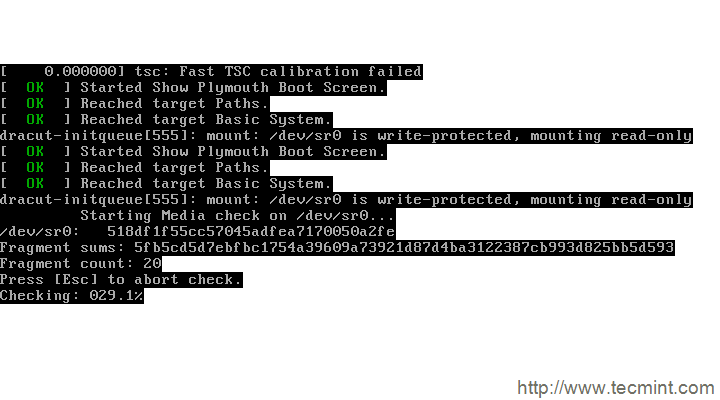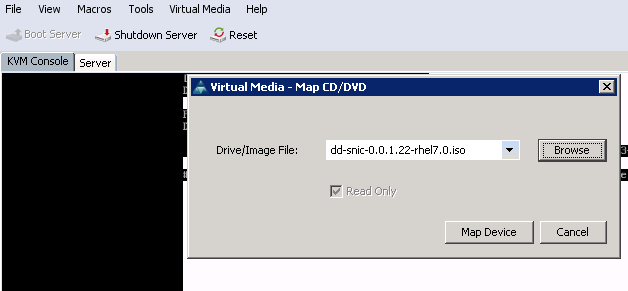Rhel 7.1 Iso
Review Red Hat Enterprise Linux 6.7: 1 isos in 1 groups: Red Hat Enterprise Linux 7.1: Review Red Hat Enterprise Linux 7.1: 1 isos in 1 groups: Red Hat Enterprise.

Welcome to LinuxQuestions.org, a friendly and active Linux Community. You are currently viewing LQ as a guest. By joining our community you will have the ability to post topics, receive our newsletter, use the advanced search, subscribe to threads and access many other special features. Registration is quick, simple and absolutely free. Note that registered members see fewer ads, and ContentLink is completely disabled once you log in. Are you new to LinuxQuestions.org? Visit the following links: If you have any problems with the registration process or your account login, please.
If you need to reset your password,. Having a problem logging in? Please visit to clear all LQ-related cookies. Introduction to Linux - A Hands on Guide This guide was created as an overview of the Linux Operating System, geared toward new users as an exploration tour and getting started guide, with exercises at the end of each chapter. For more advanced trainees it can be a desktop reference, and a collection of the base knowledge needed to proceed with system and network administration.
- Red Hat Enterprise Linux 7.3 DVD ISO Free Download, RHEL 7.3 DVD ISO, Overview and Features of Red Hat Enterprise Linux 7.3, System Requirements of RHEL 7.3.
- Red Hat Enterprise Linux 7.3 DVD ISO Free Download, RHEL 7.3 DVD ISO, Overview and Features of Red Hat Enterprise Linux 7.3, System Requirements of RHEL 7.3.
This book contains many real life examples derived from the author's experience as a Linux system and network administrator, trainer and consultant. They hope these examples will help you to get a better understanding of the Linux system and that you feel encouraged to try out things on your own. To receive this Complete Guide absolutely free. Hi, Please see steps below to do that: You can download the Latest release of RHEL 7 here: Please read first the Architecture requirements. And if you PC meets them. You can get a free evaluation subscription from the Software & Download Center at There are two basic types of installation media available on the AMD64 and Intel 64 (x8664) and IBM Power Systems (ppc64) architectures: Binary DVD A full installation image which can be used to boot the installation program and perform an entire installation without additional package repositories. Boot.iso A minimal boot image which can be used to boot the installation program, but requires access to additional package repositories from which software will be installed.
You will need AMD64 and Intel 64 variant if your PC isnt based on IBM Architecture: rhel-variant-7.0-x8664-dvd.iso Follow these steps to obtain the Red Hat Enterprise Linux 7 ISO image files: 1. First time user: need to register on the Red Hat site.
A)Go to this site: b)Click Register under New to Red Hat? C)Create Account type as Personal. D)Enter all the required details like email address, password name etc. And click Submit. Note: you will require corporate email address here. Gmail address wont work.
If you do not have one use Your Facebook email address. e)Login with your new credentials. F)Under Create new user: Click cancel.
G)Go to Downloads Page Again: h)Click on Start evaluation in front Red Hat Enterprise Linux Line. I)On next page click on Continue Button under Server for x8664 architecture - 30 day evaluation. J)On next page click on Agree and Get Started button. K)On the Next page click on Download and follow all the steps mentioned there. L)Select The DVD option. E.g.: RHEL 7.1 Beta Binary DVD m)Your download will begin. Save it to an appropriate location.
Size 3.58 GB. Also make a note of the SHA-256 Checksum.in case of any error during the download we can figure it out. N)you can use this page for reference: o)Use Blank DVD and ISO maker software to burn the ISO image to your DVD. You can make a bootable USB using Fedora LiveUSB Creator. Hi, Please see steps below to do that: You can download the Latest release of RHEL 7 here: Please read first the Architecture requirements. And if you PC meets them.
You can get a free evaluation subscription from the Software & Download Center at There are two basic types of installation media available on the AMD64 and Intel 64 (x8664) and IBM Power Systems (ppc64) architectures: Binary DVD A full installation image which can be used to boot the installation program and perform an entire installation without additional package repositories. Boot.iso A minimal boot image which can be used to boot the installation program, but requires access to additional package repositories from which software will be installed.
You will need AMD64 and Intel 64 variant if your PC isnt based on IBM Architecture: rhel-variant-7.0-x8664-dvd.iso Follow these steps to obtain the Red Hat Enterprise Linux 7 ISO image files: 1. First time user: need to register on the Red Hat site. A)Go to this site: b)Click Register under New to Red Hat? C)Create Account type as Personal.
D)Enter all the required details like email address, password name etc. And click Submit. Note: you will require corporate email address here. Gmail address wont work. If you do not have one use Your Facebook email address.
Change Ntp Settings In Rhel 7.1
e)Login with your new credentials. F)Under Create new user: Click cancel. G)Go to Downloads Page Again: h)Click on Start evaluation in front Red Hat Enterprise Linux Line.

I)On next page click on Continue Button under Server for x8664 architecture - 30 day evaluation. J)On next page click on Agree and Get Started button.
K)On the Next page click on Download and follow all the steps mentioned there. L)Select The DVD option. E.g.: RHEL 7.1 Beta Binary DVD m)Your download will begin.

Save it to an appropriate location. Size 3.58 GB.
Also make a note of the SHA-256 Checksum.in case of any error during the download we can figure it out. N)you can use this page for reference: o)Use Blank DVD and ISO maker software to burn the ISO image to your DVD. You can make a bootable USB using Fedora LiveUSB Creator. Note that this is an EVAL version, and RHEL is not free to use. CentOS is your target. Plenty of people navigate to this forum and then ask them same question. Is there any value in a sticky explaining why ya use RHEL & why it may be more practical to use Centos (or Fedora)?
My thoughts:. RHEL is an enterprise level distro aimed at servers. To get support you need to buy a support contract from RH.
This provides security plus ticks a box for the manager/auditors. CENTOS is the same as RHEL without the branding. It is not supported by RH and is free to download and updates are free. Support is obtained in forums such as this - by volunteers not paid staff. The latter point is worth considering if you want to take the cheap option into your enterprise. Fedora is the bleeding edge of RH's development.
Again it is not supported by RH and support is obtained in forums such as this. It is NOT designed for the enterprise however it is a useful distro for gauging the direction RH is travelling Cheers.
Download Rpm For Rhel 7.1
Red Hat Enterprise Linux is a commercial Linux operating system sold by subscription. It was initially distributed for free under the name of Red Hat Linux, but discontinued in the year 2003 when the project was split into Fedora Core and RHEL. It is a pioneer operating system, as it was the first to use the highly-acclaimed RPM (Red Hat Package Manager) software to install, update and remove packages. Inspiration for the Fedora and CentOS projects Until version 6.1, Red Hat used a text mode installer for its Linux distribution. However, in 1999 the company developed the Anaconda graphical installer, which was intended to allow novice users to install the operating system.
Both RPM and Anaconda technologies are now used in many popular operating systems, including Fedora Linux and CentOS. The latter is an open source flavor of RHEL (Red Hat Enterprise Linux) based on its publicly available source packages (SRPMS).
Distributed in multiple editions The operating system was always available as Workstation, Entry-level Server and Advanced Server editions. Recent editions include RHEL Advanced Platform, RHEL Desktop with Workstation and Multi-OS option, RHEL Desktop with Workstation option, RHEL Desktop with Multi-OS option, and RHEL Desktop. Academic editions of its Workstation and Server flavors are also available for purchase.
The distribution used and it still uses GNOME as its default desktop environment, since the release of Red Hat Linux 6.0. Default applications Default applications include the Mozilla Firefox web browser, GIMP (GNU Image Manipulation Program) image editor, Inkscape SVG graphics editor, K3b CD/DVD burning tool, and the LibreOffice office suite. Among other software packages, we can mention the Mozilla Thunderbird email/newsgroup client, MariaDB database engine, OpenJDK, OpenSSH, OpenSSL, Perl, PHP, Postfix, PostgreSQL, Python, Qt, Samba, systemd, XOrg Server, and Vim (Vi Improved) advanced text editor. Bottom line As mentioned, Red Hat Enterprise Linux is a pioneer operating system.
Today, it is used in well known organizations, commercial vendors, and companies from the IT business. New in Red Hat Enterprise Linux 7.2 Beta:.
Iptables Rhel 7.1
Better processor allocation for tasks that require dedicated processor time. Modern systems have multiple processors and certain demanding workloads typically prioritize a dedicated processor at all times rather than efficiently sharing processor time with other applications and services. The introduction of on-demand vmstat workers in the kernel helps achieve more efficient CPU sharing and resource balancing. The ability to remotely manage local disk data security based on network identity, making the task easier and more secure. Enhancements to the storage management API (libStorageMgmt) now provide a vendor agnostic mechanism to query disk health and RAID configuration management. The introduction of conntrack-tools for better network connection tracking.